C3.2 Defense Against Disease
1/36
There's no tags or description
Looks like no tags are added yet.
Name | Mastery | Learn | Test | Matching | Spaced |
|---|
No study sessions yet.
37 Terms
What is the difference between communicable and non-communicable diseases? Give a few examples of each
Communicable (Infectious) diseases 🦠
Diseases caused by pathogens, meaning they can spread from infected people to non-infected people
Ex. Cholera, Malaria, Tuberculosis, HIV/AIDS
Non-Communicable (Infectious) diseases
Diseases that are not caused by pathogens, and instead are a result of genetic disorders, deficiencies, lifestyle choices or other environmental factors
Ex. Lung Cancer, Cardiovascular disease, sickle cell anemia, malnutrition
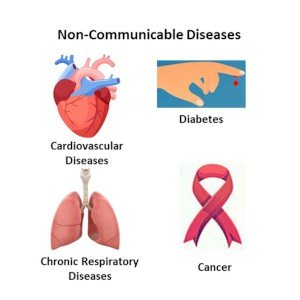
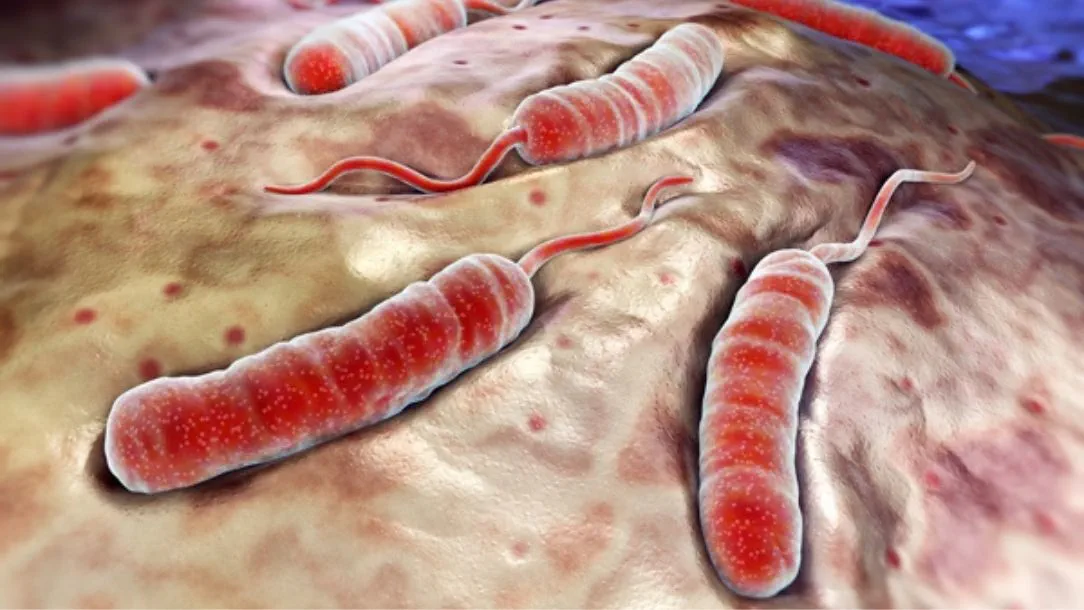
What are pathogens? What do pathogens encompass/include? Can you give an example of each?
Any microorganisms that can cause disease in plants or animals
Pathogens include:
#1. Bacteria = Tuberculosis
#2. Fungi = Athlete’s Foot
#3. Protozoa (which include Protists) = Malaria
#4. Viruses = HIV/AIDS
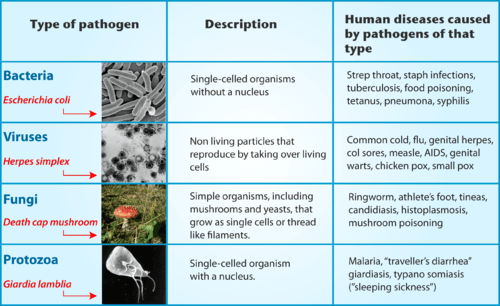
Are all pathogens harmful?
No; Not all bacteria, fungi, or protists are harmful; However, ALL VIRUSES are harmful
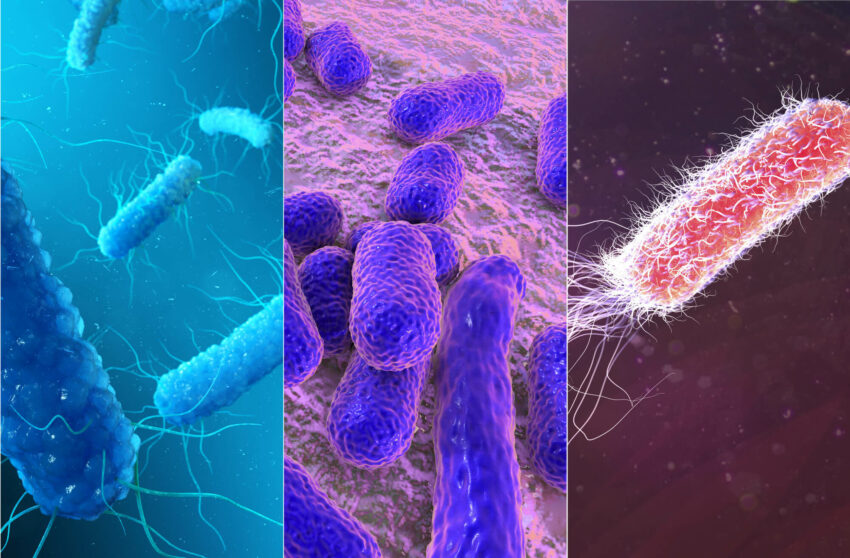
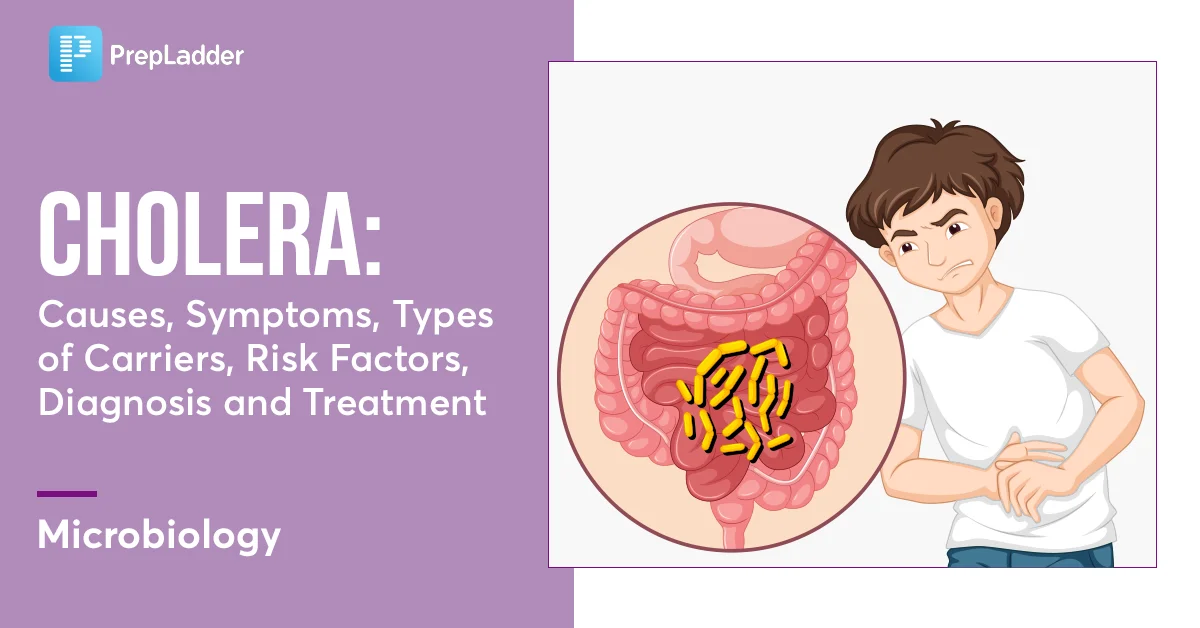
What did John Snow discover about Cholera in 1854?
He discovered that cholera was a waterborne disease caused by a bacteria known as Vibrio Cholerae;
He mapped the infections in London, which all traced back to a single contaminated water pump.
After removing the pump handle, the outbreak stopped, which validated his theory about germs and showed that people need better sanitary practices (like frequent hand washing)
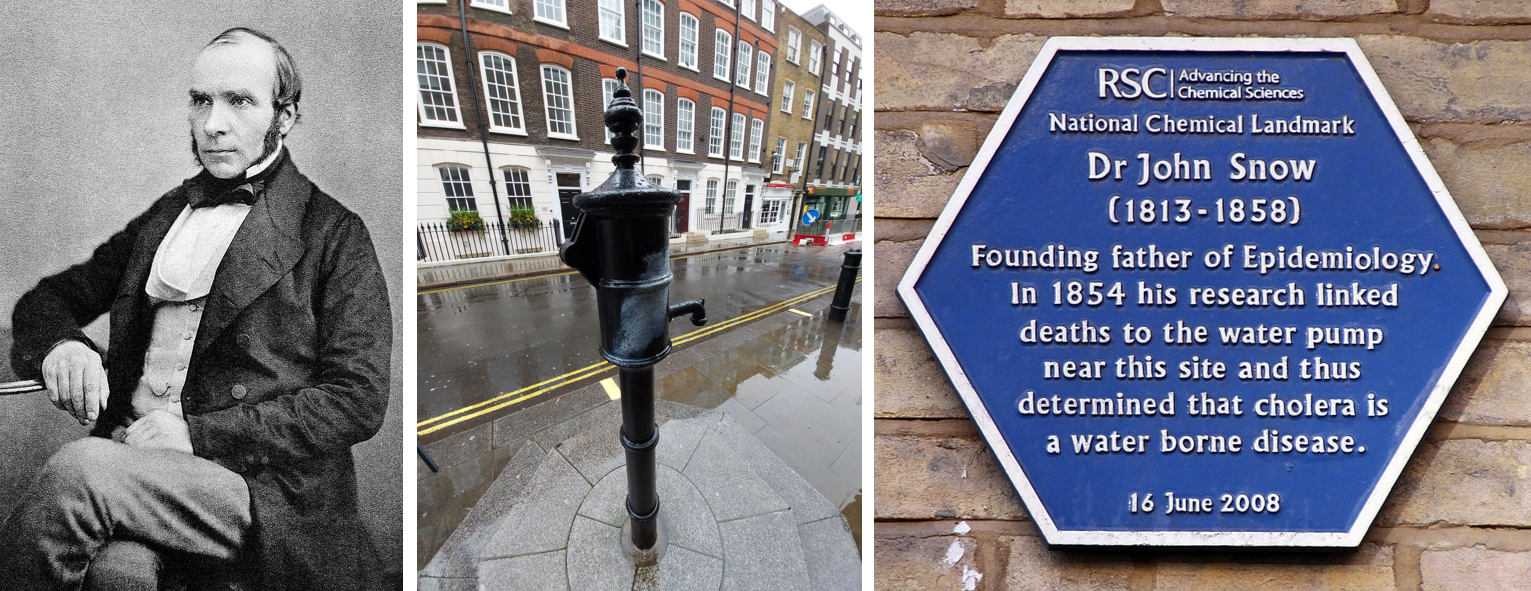
What did Ignaz Semmelweis discover about Childbed fever?
He discovered that childbed fever (puerperal fever) was a bacterial infection of the female reproductive tract after childbirth, commonly spread by doctors handling corpses before delivering babies without washing hands.
He saw a correlation between autopsies and maternal deaths, so he introduced mandatory handwashing, which completely cut down on deaths and led the way to modern hospital hygiene.
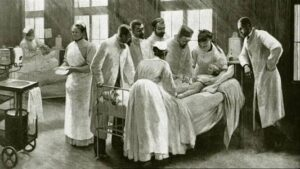
What is our body’s first line of defense against pathogens? What characteristics of this first line of defense help protect us against pathogens?
Skin and mucous membranes!!
Skin forms a tough physical shield against pathogens and produces sebum, that keeps our skin at a low pH, inhibiting the growth of bacteria
Mucous Membranes help protect vulnerable areas (like airways, the digestive system, reproductive organs) by produce mucus, which traps pathogens and contains lysozyme enzymes that have antibacterial properties.
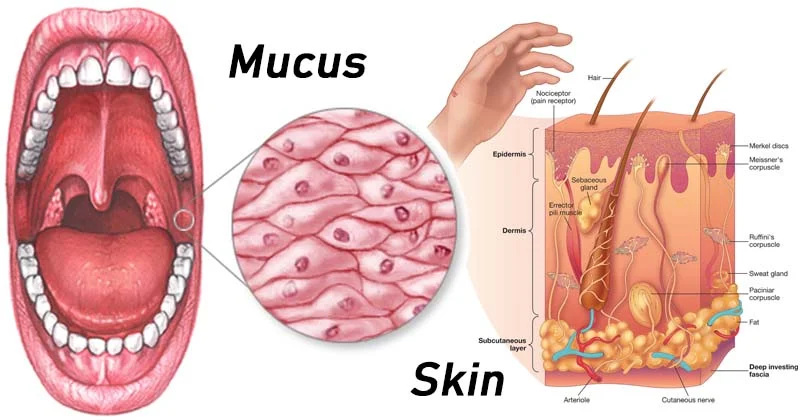
What is blood clotting for? Briefly describe what it does
Blood clotting prevents pathogens from entering the body through wounds by forming a mesh of fibrin around red blood cells, sealing the cut.

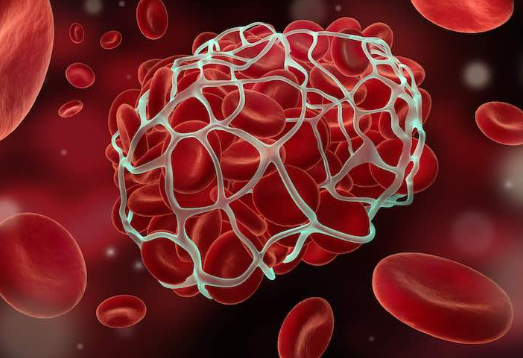
Go through the steps of the blood clotting process.
When skin is cut:
Platelets release clotting factors, triggering a cascade of chemical reactions (like convert prothrombin into thrombin)
The enzyme Thrombin converts fibrinogen (another coagulating protein) into fibrin, forming an insoluble mesh of fibrin.
This mesh traps more platelets and blood cells, sealing the wound.
Exposure to air hardens the clot, turning it into a scab, and preventing infection.
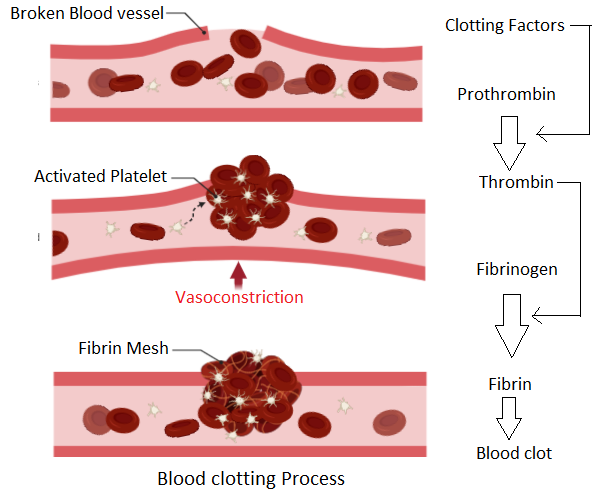
What are the key differences between the adaptative and innate immune system?
Innate immunity is a rapid, non-specific response to pathogens that we have from birth. Adaptive immunity is a slower, specific response to pathogens that we develop by coming into contact with various pathogens
Innate Immunity:
Recognizes any foreign cells as “non-self” based on its antigens
Quickly responds to any bacteria, viruses, fungi, pollen, and dust
Uses phagocytes like MACROPHAGES to engulf and digest invading pathogens
Is non-specific, and does not adapt to specific pathogens over time
Adaptive Immunity:
Targets specific pathogens based on its antigens
First exposure triggers a response, leading to the production of antibodies & memory cells
Future exposure results in a much faster immune response
Vaccination uses this system by introducing harmless versions of pathogens to boost immune memory

What are lymphocytes? Where can you find them? What are the two main types of lymphocytes?
Lymphocytes are white blood cells, that play a big role in the specific immune response. They are found in the lymphatic system, specifically the lymph nodes, as well as the circulatory system, in the bloodstream.
The 2 main types of Lymphocytes are:
#1. T Cells → Mature in the thymus, have T-cell receptors, and recognize specific antigens.
#2. B Cells → Mature in the bone marrow, have antibody receptors, and bind to specific antigens.
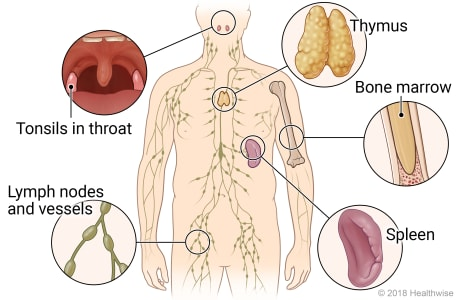
How do T-cells work?
T-cells are activated when they bind to antigen-presenting cells Macrophages & Infected cells
They divide by mitosis to create clones with identical receptors on them for rapid immune responses
What happens: Macrophages (which are a part of the innate immune system) that engulfed and digested the invading pathogen; presents the antigens of the pathogen to the T-Cell. The Helper T-cell binds to the antigen-presenting cell (so it binds to the antigens) on that macrophage. Now the T-cells are activated, and go through mitosis to produce clones with identical receptors to the macrophage.
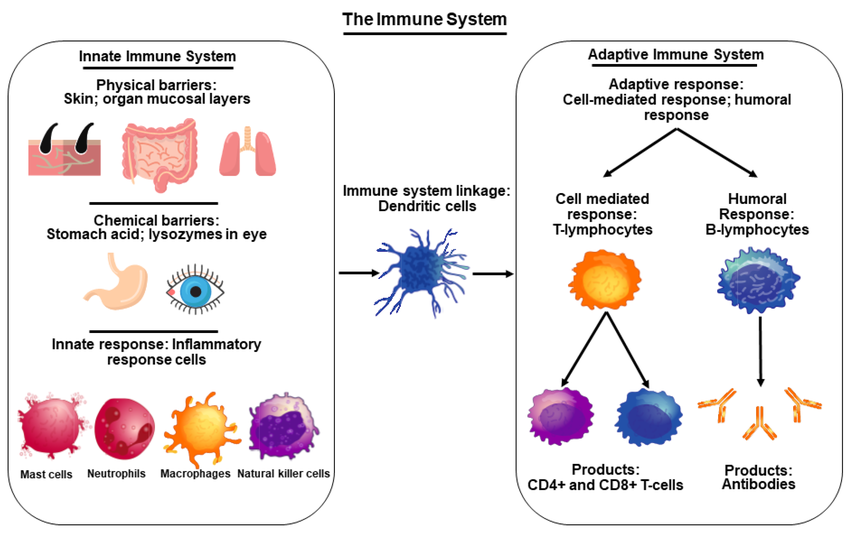
How do B-cells work?
B-cells have unique antibody receptors that bind to specific antigens
When they’re activated, they also divide by mitosis but, they create Plasma cells and Memory Cells.
Memory Cells stay in the blood for future immune responses, while Plasma Cells secrete antibodies that fight off pathogens.
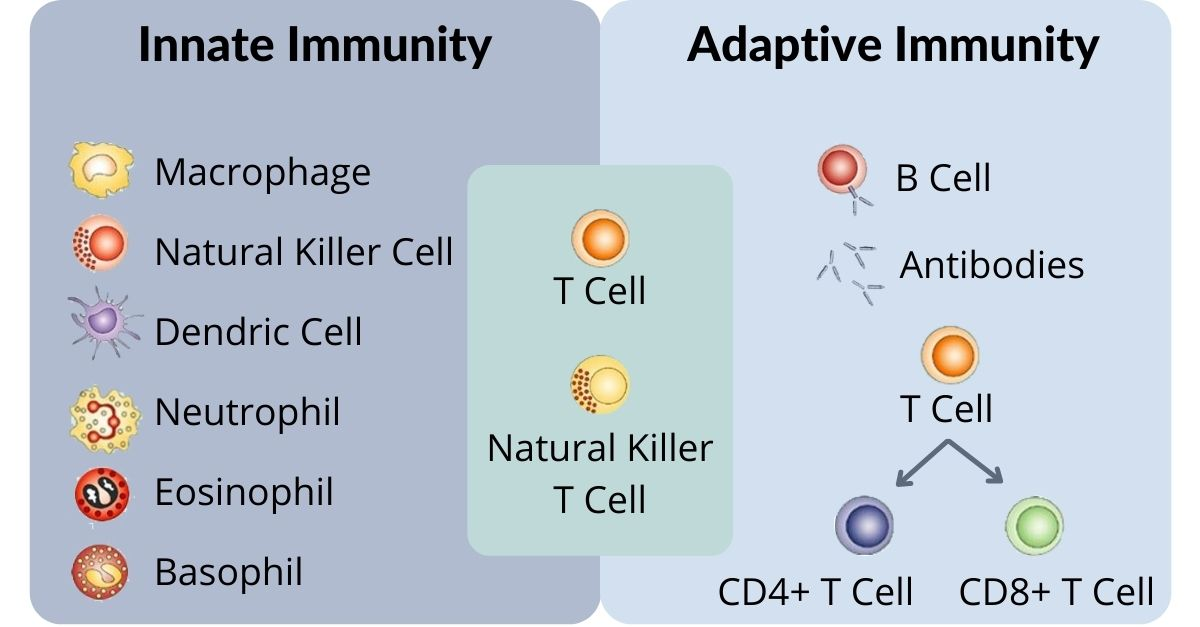
What are antigens again? Where are they found?
Antigens are the glycoproteins/glycolipids on the surface of cell membranes that trigger the immune response. They are found on the surface of pathogens and red blood cells.
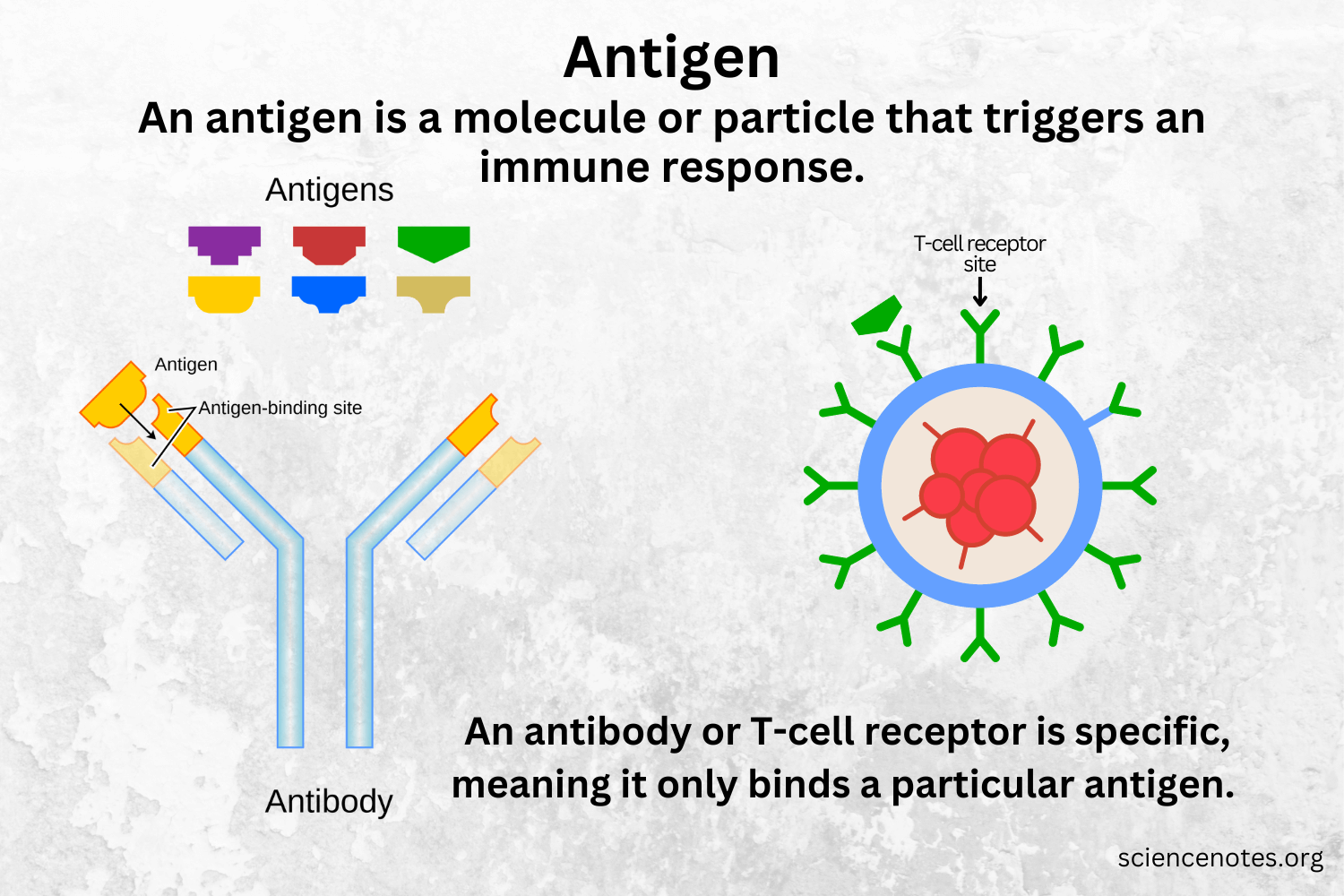
What do blood transfusions rely on? What can happen if an incompatible transfusion occurs?
Matching antigens that determine blood group
Rhesus (Rh) Factor (a protein) that determines if someone is Rh positive or Rh negative
Incompatible transfusions trigger an immune response, causing antibodies to be produced against the antigens of the foreign red blood cells. This can lead to agglutination, the clumping of red blood cells, which can kill you :)
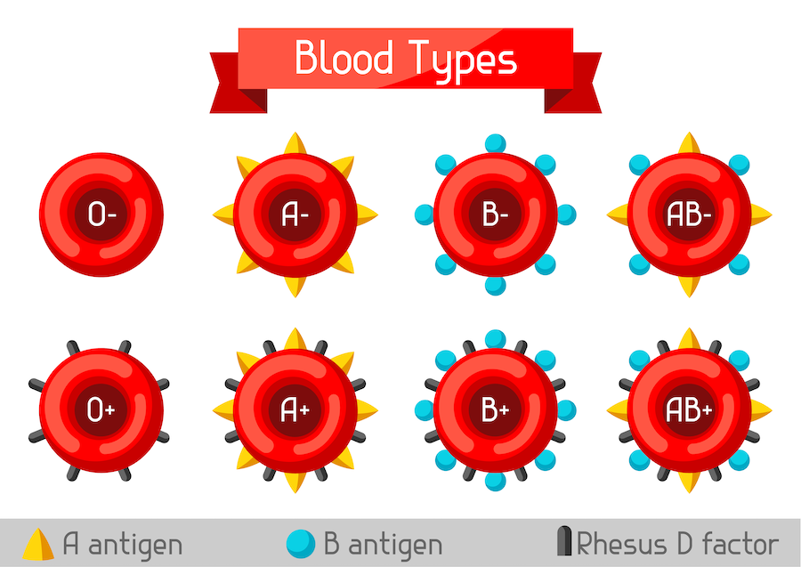
Can you describe how B-cells aka B-lymphocytes are activated (in steps)?
Phagocytes engulf pathogens, digesting them and presenting antigens on their surface, becoming antigen-presenting cells.
T-helper cells recognize and bind to these antigens, using their specific receptors to recognize the threat.
Activated T-helper cells then bind to B-Cells, specifically to antibody receptors on B-Cells that are complementary to the antigen.
While attached, the T-helper cells release signaling proteins, that triggers B-cell activation.
Activated B cells divide by mitosis, producing genetically identical clones with the same antibody receptors
Later on, B cells differentiate into:
Plasma Cells = produce and release specific antibodies to fight back against and neutralize the pathogen
Memory Cells = remain in blood circulation to provide long-term immunity
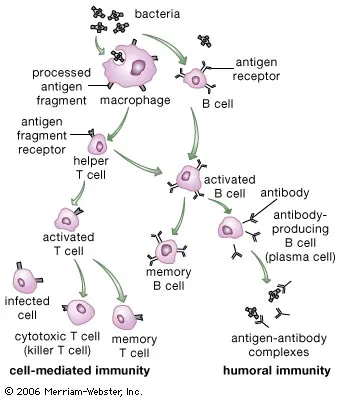
Which cells make up the Adaptive vs Innate Immune Responses? Describe their basic function
Innate:
Phagocytes (Macrophages & Neutrophils) → Engulf and destroy pathogens through phagocytosis.
Natural Killer Cells → Target and kill infected or abnormal cells (like cancerous cells).
Dendritic Cells (NOT Nerve cells) → Process pathogens and present their antigens to trigger an adaptive immune response.
Adaptive:
T-cells (Helper, Cytotoxic T Cells)
Helper T Cells activate B cells and other immune cells by acting as antigen-presenting cells
Cytotoxic T Cells directly kill infected or abnormal cells.
B-cells (Plasma & Memory B Cells)
Plasma Cells produce antibodies that target pathogens and last for a few weeks, maybe a few months
Memory B Cells remain in circulation for faster future immune responses, and can last for years or a lifetime
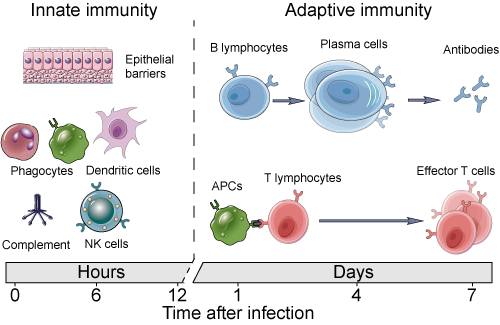
What is the primary and the secondary immune response?
Primary Immune Response = When someone is first exposed to an antigen, B-cells start dividing by mitosis to produce both plasma cells and memory cells; Plasma cells immediately produce antibodies, while Memory cells remain in the bloodstream to provide long-term immunity
This is the process that was described earlier; where t-cells activate b-cells
Secondary Immune Response = If the same antigen re-enters the body, memory cells will rapidly divide into antibody-producing plasma cells and even more memory cells; The response is extremely fast, and generally clears the infection before any symptoms can even develop. This is why diseases like measles are rarely contracted a second time.

How come some diseases keep infecting us?
Because viruses can mutate and produce different antigens; Each of which require a separate primary immune response.
What is HIV? How can you contract HIV?
HIV is a type of retrovirus, meaning it contains RNA instead of DNA. It weakens the immune system by targeting T-helper cells, and making people vulnerable to infections.
HIV can be contracted through bodily fluids because of sexual intercourse, blood transfusions, sharing needles; It can also be contracted from mother to child across the placenta, during birth, where blood gets mixed, and through breast milk.
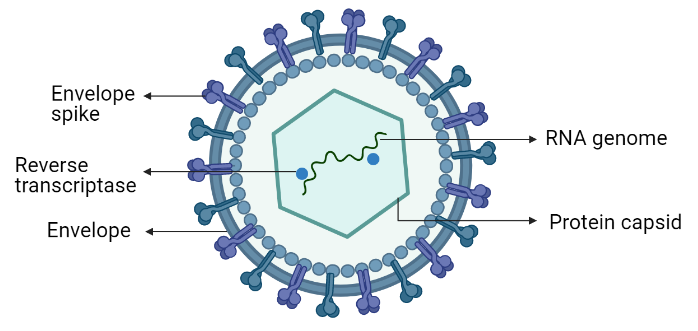
Can HIV survive outside of the body?
No! HIV is a virus, so it requires a host cell to replicate and cannot survive outside of the body for very long.
How does HIV infect people? How can we detect
HIV contains RNA, so once its inside a host cell, it uses an enzyme called reverse transcriptase to convert RNA into DNA inside the host cell.
HIV targets and DESTROYS T-helper cells, which are a key part of the adaptive immune response, so HIV essentially inhibits the body's capacity to produce antibodies
Can you produce antibodies against HIV? How can we detect HIV?
Yes, it is possible; If HIV is detected within the early stages of infection, it is possible for antibodies to be produced against HIV;
The progression of HIV can be detected by the antigens that show up in your blood
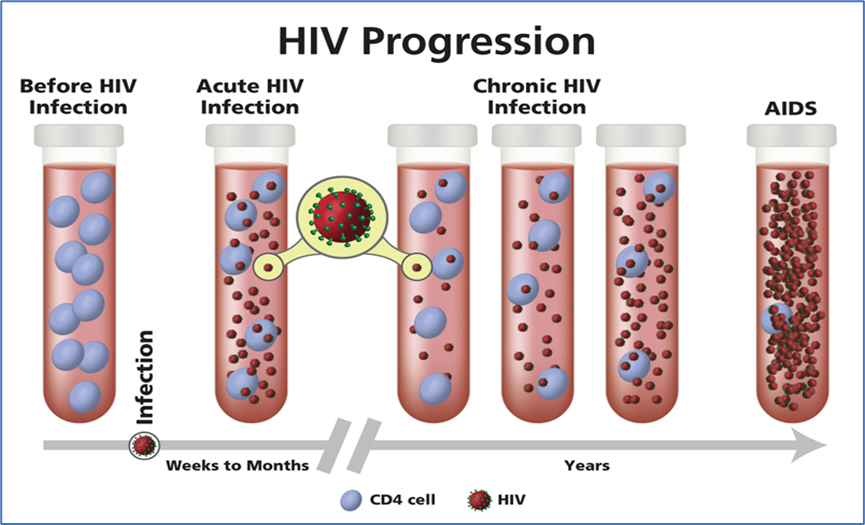
What’s the difference between HIV and AIDS? What does AIDS mean and stand for? Is there any cure for AIDS?
HIV is the virus itself, while AIDS is the condition caused by severe damage to the immune system from HIV.
AIDS stands for Acquired Immune Deficiency Syndrome , the disease that develops when T-helper cell counts drop significantly, and leave the immune system unable to fight infections.
There’s no cure for AIDS yet, but Anti-Retroviral drugs have helped slow the progression of the disease, to help people with HIV live a full life :P
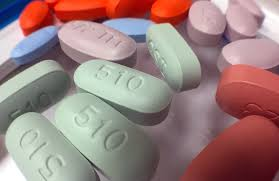
What are Antibiotics? How do they work? Give an example of one antibiotic and what it does; Do antibiotics work on all bacteria?
Antibiotics are medications used to treat bacterial infections.
They prevent bacterial growth by targeting the key processes in bacteria, like:
Ribosome Function
Cell Wall Formation
DNA replication
Transcription & translation (the production of proteins)
Ribosome function
One antibiotic is Penicillin, which is actually produced by Fungi; It disrupts bacterial cell walls, which disrupts the structure and function of the bacteria;
Antibiotics don’t work on all bacteria, because some bacteria have developed adaptations to resist breakdown by antibacterial drugs; One example: Tuberculosis, which has adapted to have very thick cell walls in order to resist breakdown by antibiotics
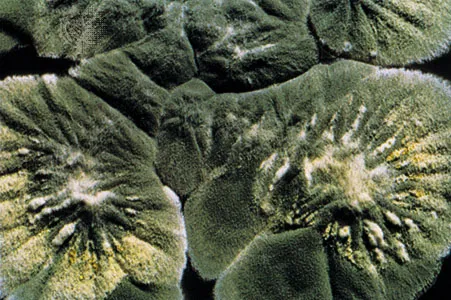
How come antibiotics don’t work on viruses?
Because viruses are not cells at all!!
They don’t even have cellular structures like ribosomes or cell walls, and so antibiotics have no way of targeting them;
Viruses solely rely on the mechanisms of the host cells to replicate and exist, so even if you did use antibiotics, it would mean you would be harming human cells too.
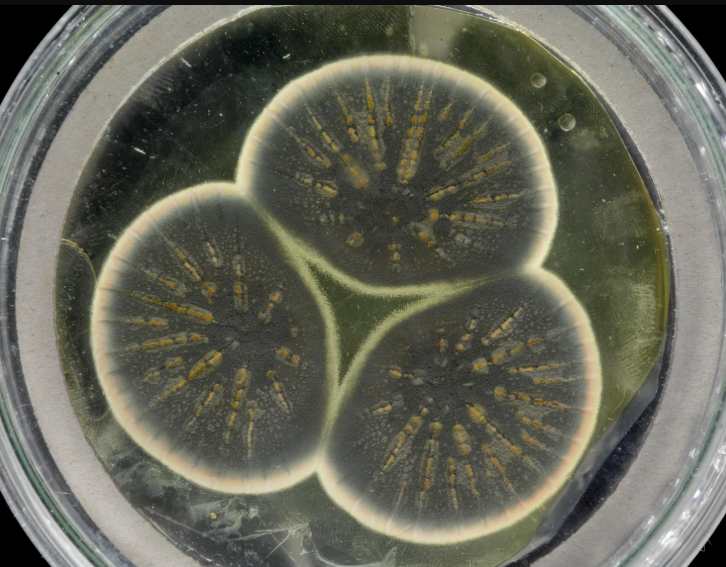
So what do we use to target viruses? What does this do?
We use antiviral drugs to target VIRUSES;
These drugs only target viral enzymes, without actually harming the host cell.
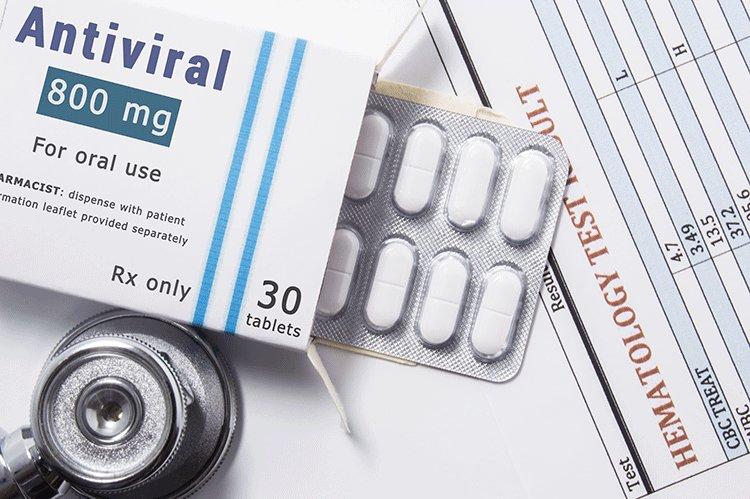
What is antibiotic resistance? Can you give an example of an antibiotic resistant bacteria?
When Populations of bacteria naturally mutate, but some of these mutations lead to resistance against antibiotics, which is known as Antibiotic Resistance.
Since antibiotic resistant bacteria go on to survive, reproduce, and spread their genes, this leads to the entire population becoming resistant (natural selection).
One example is MRSA (Methicillin-Resistant Staphylococcus aureus);
It can cause boils and other tissue infections, and it has become resistant to multiple antibiotics, making infections really hard to treat;
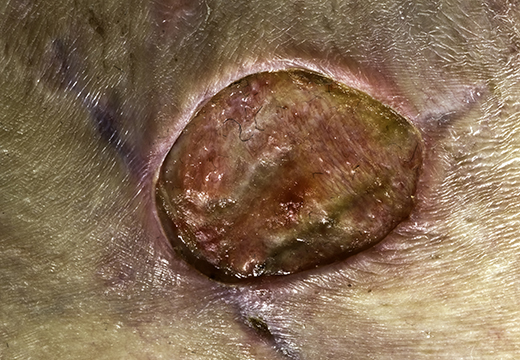
What is the cause of antibiotic resistance?
Overusing and incorrectly using antibiotics;
If you use antibiotics to frequently, even for minor infections, then this creates a selective environment that kills off any susceptible bacteria, and only resistant bacteria go on to survive, spreading their genes containing mutations that have allowed them to become resistant against the antibiotics.

How can we prevent antibiotic resistance?
Only use it when necessary (and not for viral infections)
Maintain proper hygiene in hospitals
Limit the use of antibiotics in agriculture
And invest in research that helps develop new antibiotics to stay ahead of the resistant bacteria

Can all diseases affect everyone equally? Give a few examples of diseases that are human-specific:
Nope, some diseases are species-specific, meaning they can’t infect other species because of differences in cell receptors, or even differences in body temperature, because the pathogens require specific conditions to survive.
Diseases that are human specific:
Tuberculosis = a bacteria that seriously affects the lungs (man in the iron lung)
Measles = causes a high fever, cough, and a rash that begins on the
Diphtheria = affects the skin and respiratory tract
Polio = targets the nervous system and can cause total paralysis

What are Zoonotic Diseases? Give a few examples
Zoonotic diseases are diseases that can cross species-barriers and transmit from animals to humans
Zoonotic diseases include:
Covid-19 = first found in bats
HIV = chimpanzees in west-africa
Bird Flu = Geese
Bubonic Plague = Fleas & Rats
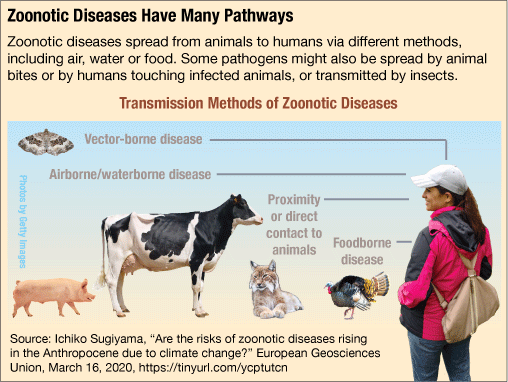
How do vaccines work? What are the different types of vaccines, how are they different?
Vaccines introduce antigens OR genetic material coding for antigens, into the body, which triggers an immune response without actually causing an illness
TYPES OF VACCINES:
#1. Live Attenuated Vaccines:
Contains weakened versions of a pathogen
#2. Inactivated Vaccines:
Contains killed pathogens or only the antigens of killed pathogens;
Vaccines stimulate the PRIMARY IMMUNE RESPONSE, leading to the formation of memory B-cells, which provide long-term immunity. This helps make sure that the SECONDARY IMMUNE RESPONSE is much faster and stronger.
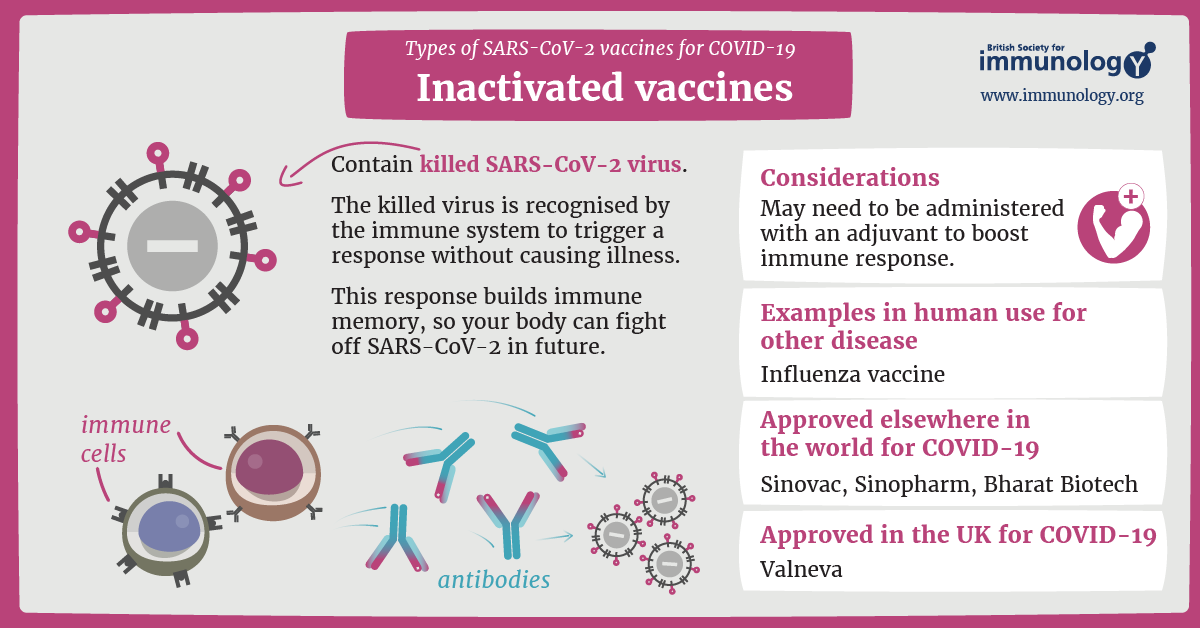
What is herd immunity? How was smallpox eradicated?
Herd immunity is when a large % of the population is vaccinated, which makes it difficult for pathogens to spread;
Smallpox was eradicated in 1980 through a global vaccination program.
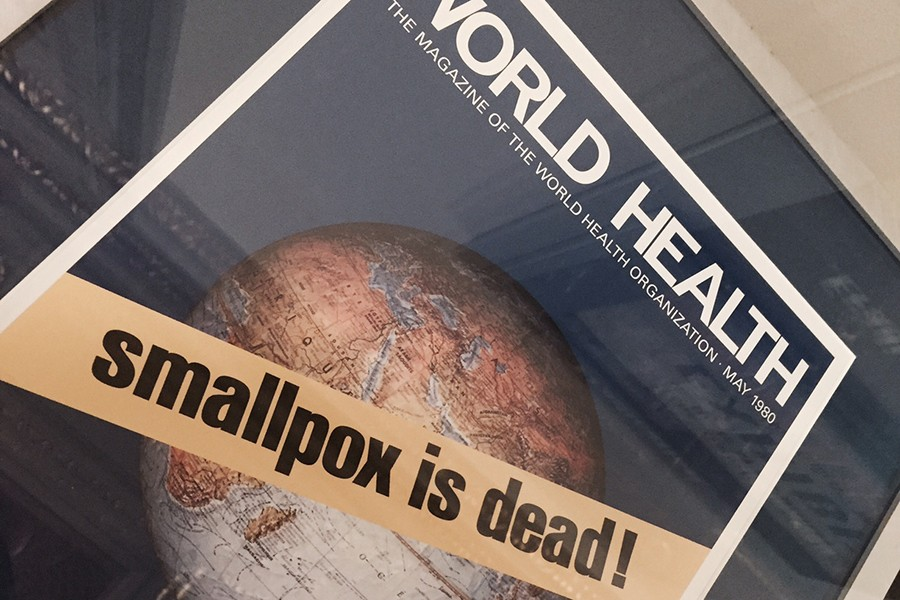
How do you calculate Percentage Difference and Percentage Change? What is the difference?
Percentage Difference = is comparing two values that happened at the same time
Percentage Change = is looking at how a value has changed over time
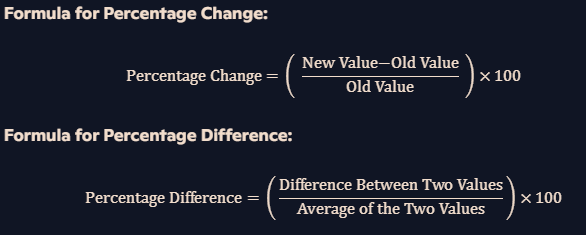
In mid-July 2023, Europe had 18 392 cases of COVID-19, while South-East Asia had 1 584 cases. Calculate the percentage difference between the number of cases in Europe and South East Asia


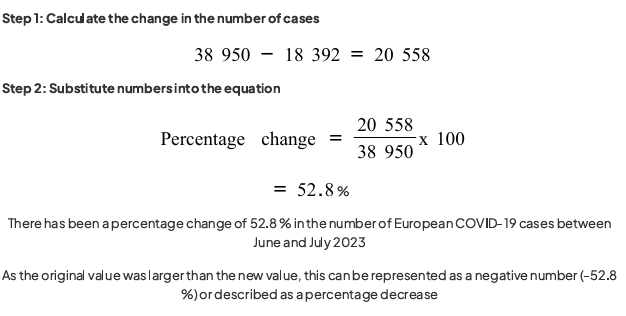
How do mRNA vaccines work?
mRNA vaccines introduce mRNA into our bodies, which produces viral proteins (antigens), which in this case, is the spike protein for Covid 19.
